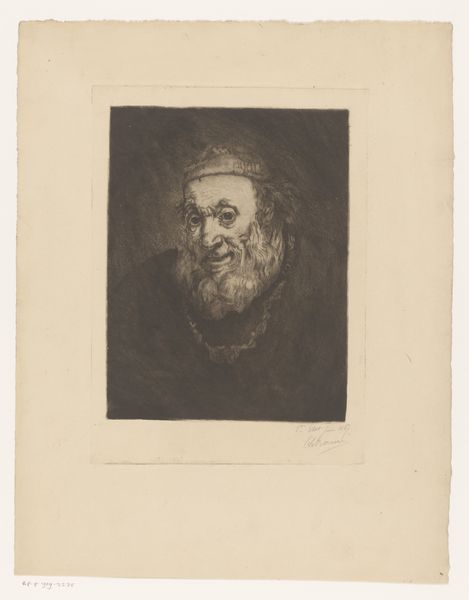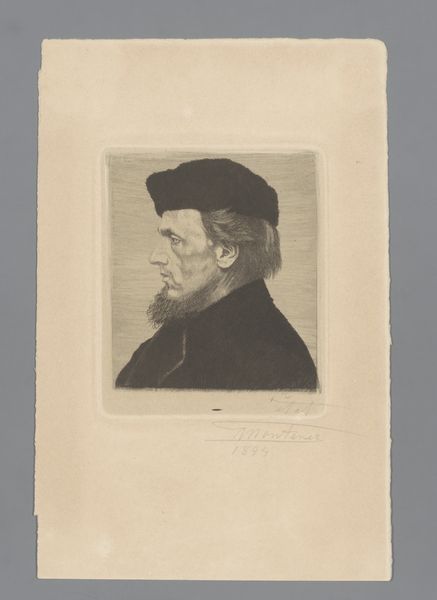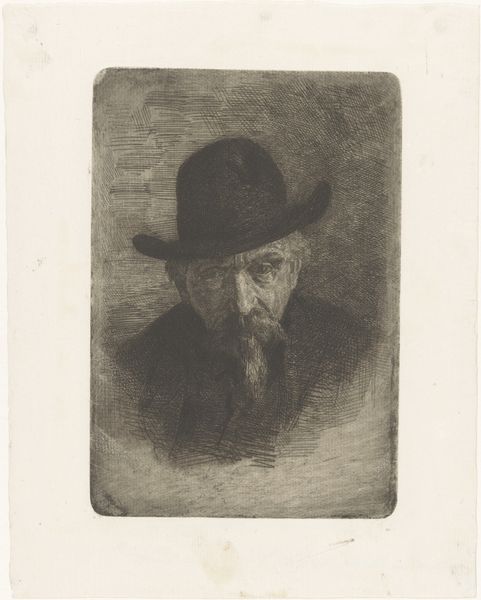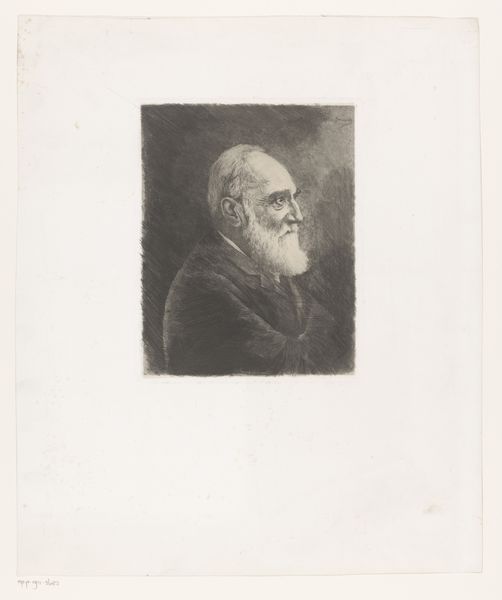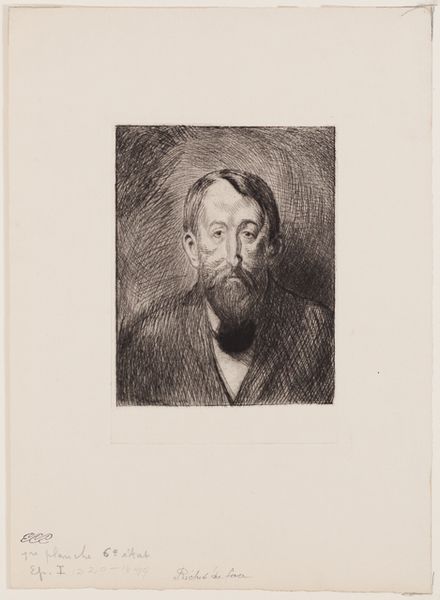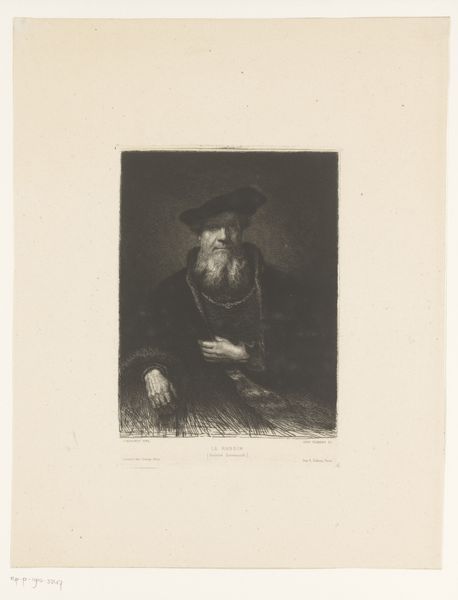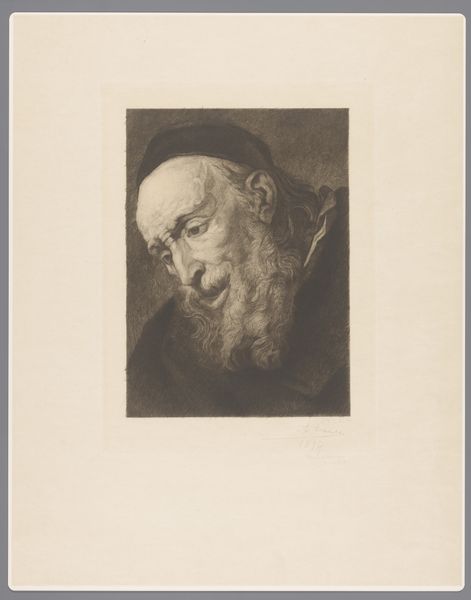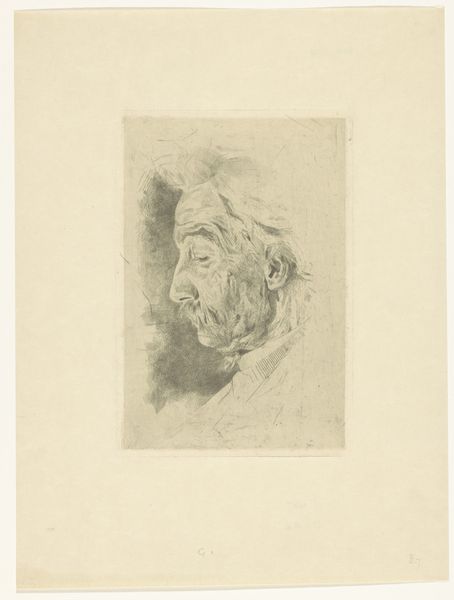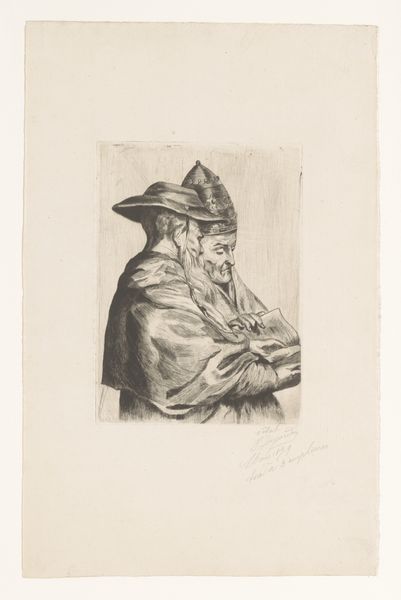
drawing, print, paper, graphite
#
portrait
#
drawing
# print
#
paper
#
graphite
Dimensions: height 212 mm, width 159 mm
Copyright: Rijks Museum: Open Domain
Editor: So, this is "Portret van een man met pet," a graphite drawing or print by Karl Jahncke, made sometime after 1878. The subject has a very direct gaze and a certain gravitas, don’t you think? How do you interpret this portrait? Curator: I see a study in representation. Jahncke creates this image during a period grappling with rapidly changing social structures, where portraiture shifts from aristocratic depiction to the middle classes. I ask you, who do you think this man is and what societal role is suggested by his image? Editor: Well, the cap seems… not necessarily working class, but maybe someone involved in some kind of craft? The serious look on his face does make him seem dignified, in a way. Curator: Precisely. It's critical to analyze what the artist is saying about this sitter by thinking about context. The use of graphite allows for nuanced shading, suggesting realism, but realism for whom? Perhaps, by humanizing this "common" man, Jahncke critiques the traditional hierarchies of power, bringing into question class and identity in art. The very act of depicting this man is then a kind of social commentary. Editor: That makes me see it differently. I was just taking it at face value, but now it’s clearly a statement. Is he making the statement, or is the artist? Curator: The question is always intertwined: the sitter and the artist are bound by the historical moments and social dynamics from which they came. So what previously appeared as mere visual interest gains a deeper, almost rebellious, resonance. Editor: I hadn’t thought about the rebellion! It shows you really need context to fully appreciate art, especially the context that highlights representation and social meaning. Curator: Exactly, and that’s how a portrait from after 1878 continues to provoke questions for us now.
Comments
No comments
Be the first to comment and join the conversation on the ultimate creative platform.
